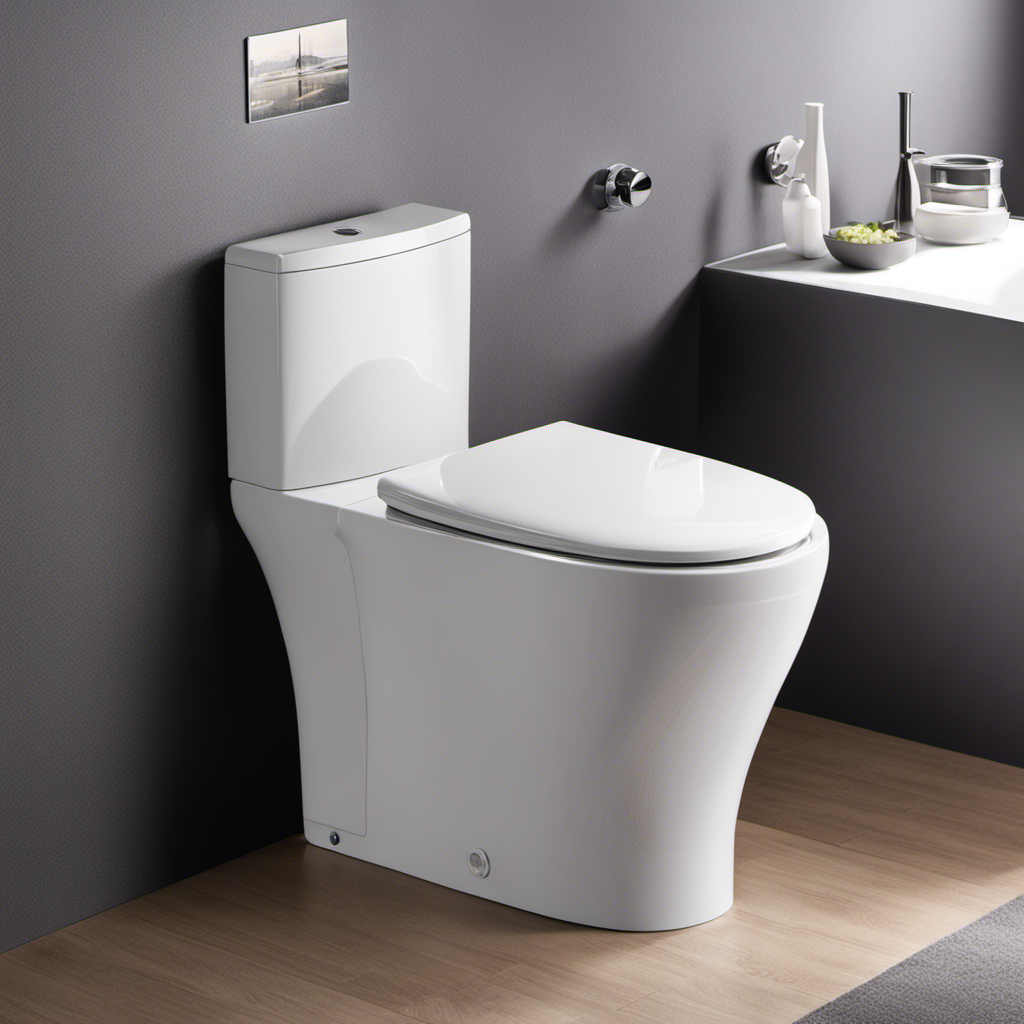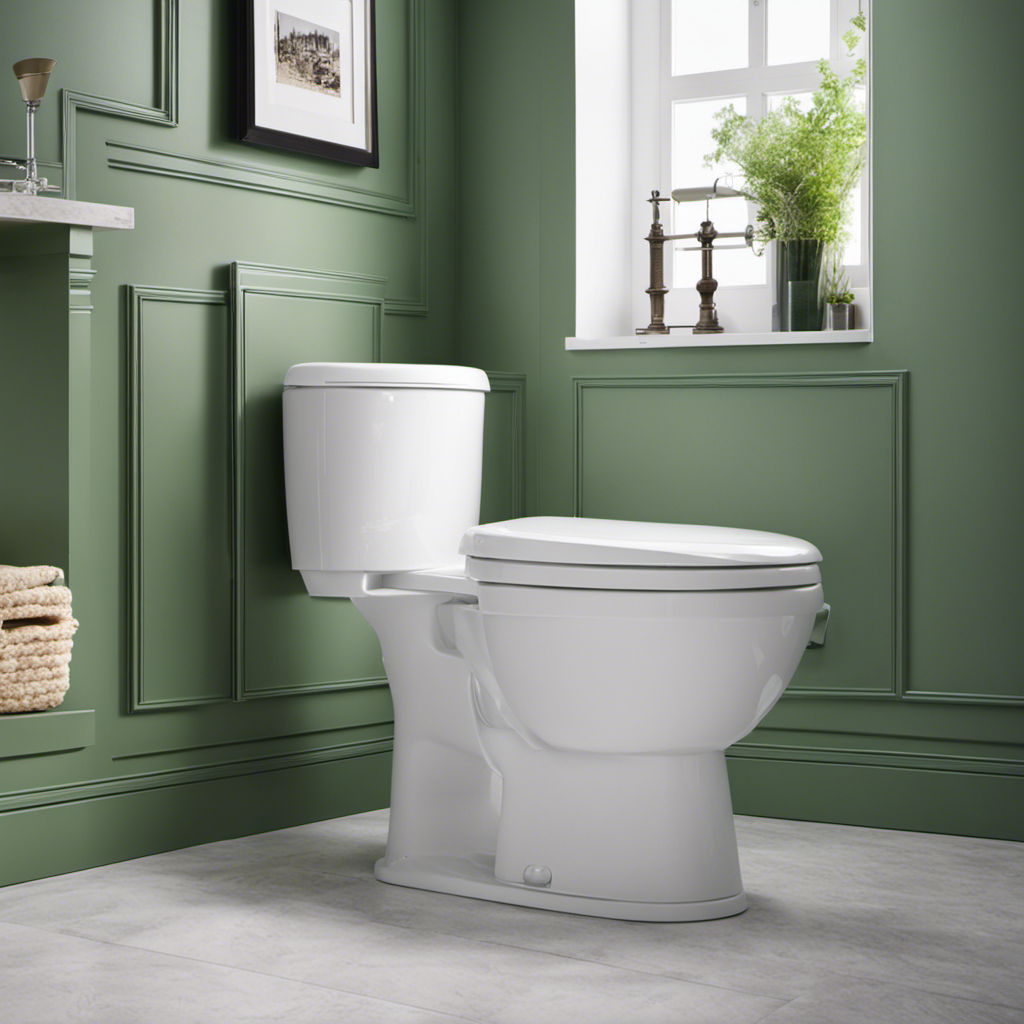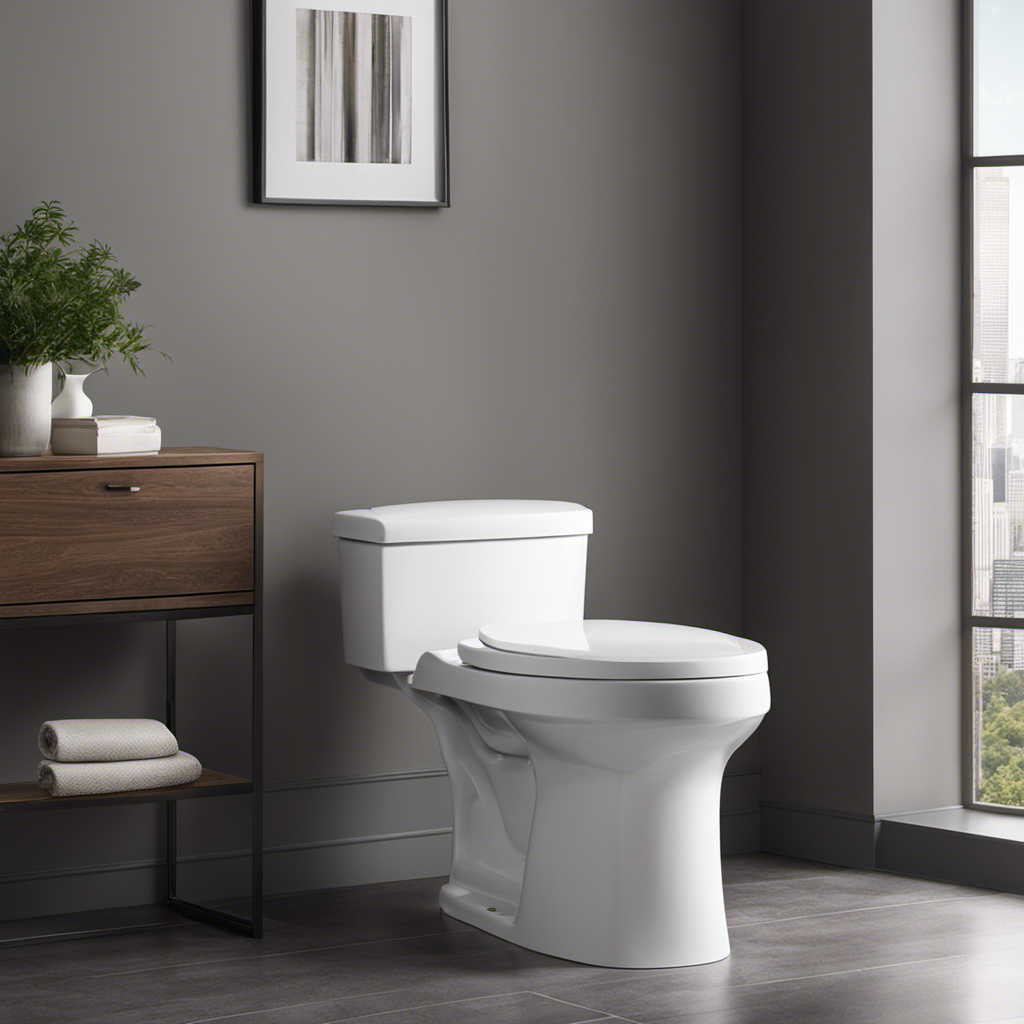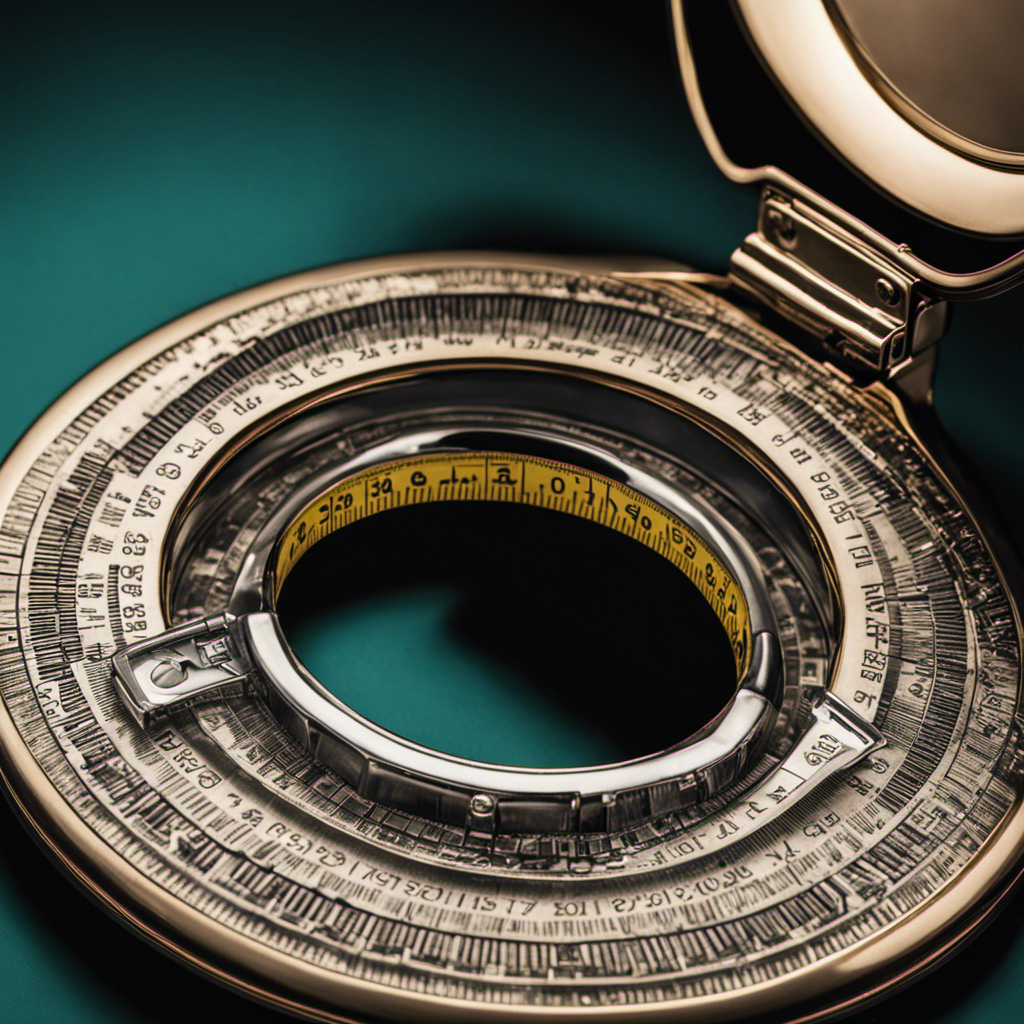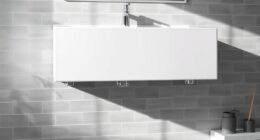Did you know that a dual flush toilet can save up to 68% more water compared to traditional toilets?
That’s right, with this innovative plumbing fixture, you can contribute to water conservation efforts without sacrificing flushing power.
In this article, I will explain what a dual flush toilet is and how it works, as well as highlight the water-saving features and provide tips for choosing and maintaining one for your home.
Get ready to make a smart and eco-friendly choice for your bathroom!
Key Takeaways
- Dual flush toilets save up to 68% more water compared to traditional toilets.
- They have internal mechanisms that allow users to choose between a full flush or a half flush.
- Dual flush toilets allow users to use less water for liquid waste.
- Choosing a dual flush toilet is a wise investment for both the environment and your wallet.
Benefits of Dual Flush Toilets
You’ll love the benefits of dual flush toilets. They include water savings and reduced environmental impact. Dual flush toilets are designed to offer two flushing options: a full flush for solid waste and a half flush for liquid waste. This innovative system allows users to conserve water by using the appropriate flush for each type of waste, resulting in significant water savings.
On average, dual flush toilets use around 20% less water compared to traditional toilets. This reduction in water consumption not only translates into cost savings on your water bill but also has a positive environmental impact by conserving this precious resource.
Additionally, with the reduced water usage, dual flush toilets contribute to lower wastewater production. This reduces the strain on wastewater treatment facilities and promotes sustainable water management practices.
How Dual Flush Toilets Work
If you want to conserve water, opt for a toilet that offers two different options for flushing. Dual flush toilets are designed with internal mechanisms that allow users to choose between a full flush or a half flush, depending on their needs.
The full flush, typically used for solid waste, releases a larger amount of water to effectively clear the bowl. On the other hand, the half flush, suitable for liquid waste, uses a smaller amount of water. This innovative design significantly reduces water consumption compared to traditional toilets that use a fixed amount of water for every flush.
Water Saving Features of Dual Flush Toilets
One of the water-saving features of dual flush toilets is the option to use less water for liquid waste. This feature is achieved through the innovative toilet design that allows users to choose between a partial flush and a full flush, depending on the type of waste being disposed.
Here are four key aspects of dual flush toilets that contribute to their water-saving capabilities and positive environmental impact:
-
Efficient flushing mechanism: Dual flush toilets are designed with a powerful flushing mechanism that effectively removes waste using less water.
-
Water volume control: The dual flush system allows users to control the amount of water used for each flush, reducing water consumption for liquid waste.
-
Separation of waste: Dual flush toilets have a built-in mechanism that separates solid waste from liquid waste, enabling targeted water usage.
-
Water conservation: With the ability to choose between a partial flush and a full flush, dual flush toilets promote water conservation and minimize unnecessary water usage.
Overall, the use of dual flush toilets not only saves water but also contributes to a greener and more sustainable environment.
Choosing the Right Dual Flush Toilet for Your Home
When selecting the appropriate dual flush toilet for your home, it’s essential to consider factors like water efficiency and bowl design. Dual flush toilets offer two options for flushing: a half flush for liquid waste and a full flush for solid waste. This innovative design allows for significant water savings compared to traditional toilets.
In terms of installation considerations, dual flush toilets are generally compatible with standard plumbing systems, making them easy to install in most homes. As for cost comparison, while dual flush toilets may have a higher upfront cost, the long-term water savings can offset this initial investment. Additionally, some local governments offer rebates or incentives for installing water-efficient fixtures.
Considering these factors, choosing a dual flush toilet is a wise investment for both the environment and your wallet. Now, let’s explore some maintenance tips for dual flush toilets.
Maintenance Tips for Dual Flush Toilets
To keep your dual flush toilet in optimal condition, remember to regularly clean the inner components and check for any leaks. Proper maintenance is crucial to ensure the efficient and reliable operation of your dual flush toilet.
Here are some common problems you may encounter and troubleshooting tips to resolve them:
-
Incomplete flush: If your toilet fails to flush properly, it may be due to a clogged rim jet or debris in the flush valve. To fix this, remove any obstructions and clean the rim jet using a toilet brush or a wire hanger.
-
Continuous running water: If your toilet keeps running after flushing, it could be a sign of a faulty fill valve or flapper. Adjust the fill valve or replace the flapper to stop the water from running continuously.
-
Weak flush: If your toilet has a weak flush, it may be due to low water pressure or a partially clogged drain. Check the water pressure and clear any obstructions in the drain to improve flushing performance.
-
Leaks: Leaks can waste water and lead to higher water bills. Inspect the toilet for any visible leaks and replace worn-out seals or gaskets to prevent water leakage.
Conclusion
In conclusion, dual flush toilets are a savvy and sustainable solution for any home. They offer a cost-effective and eco-friendly alternative to traditional toilets. With their water-saving features and efficient functionality, they can help decrease water usage dramatically.
By choosing the right dual flush toilet and following maintenance tips, you can ensure optimal performance and longevity. Remember, conservation is key!
So, swap out your old toilet for a dual flush model and make the switch today for a more sustainable future!
